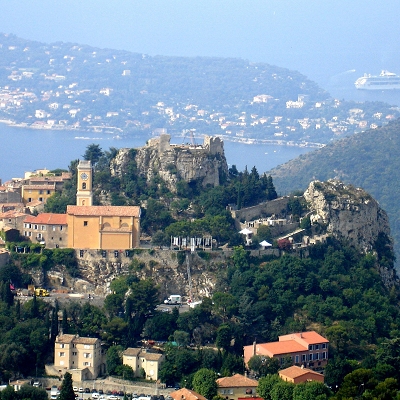
Like us on Facebook
PLACE NAMES


 
|
|
Èze
|

|
|
|
Èze is a commune in the Alpes-Maritimes department in southeastern France, not far from the city of Nice.
The area surrounding Èze was first populated around 2000 BC as a commune situated near Mount Bastide. The earliest occurrence of the name "Èze" can be found in the maritime books of Antonin as a bay called the St. Laurent of Èze. A hoard of ancient Greek silver phialae dating from the 3rd Century BC was found in Èze in the late nineteenth century and are now part of the British Museum's collection. The area was subsequently occupied by not only the Romans but also the Moors who held the area for approximately 80 years until they were driven out by William of Provence in 973.
By 1388 Èze fell under the jurisdiction of the House of Savoy, who built up the town as a fortified stronghold because of its proximity to Nice. The history of Èze became turbulent several times in the next few centuries as French and Turkish troops seized the village under orders from Hayreddin Barbarossa in 1543, and Louis XIV destroyed the walls surrounding the city in 1706 in the war of the Spanish succession. Finally in April 1860, Èze was designated as part of France by unanimous decision by the people of Èze.
Èze has been described as an "eagle's nest" because of its location overlooking a high cliff 427 metres (1,401 ft) above sea level on the French Mediterranean. It's so high that the light ochre church within (Notre Dame de l’Assomption built in 1764) can be seen from afar. An Egyptian cross inside the church suggests the village's ancient roots, when the Phoenicians erected a temple there to honour the goddess Isis.
Traditionally, the territory of the Principality of Monaco was considered to begin in the Èze village (outskirts of Nice), running along the Mediterranean coast to Menton, on the present Italian border.
 Feel free to Email me any additions or corrections Feel free to Email me any additions or corrections
LINKS AVAILABLE TO YOUR SITE
| | |





